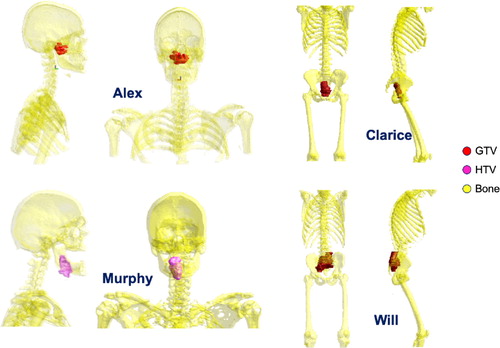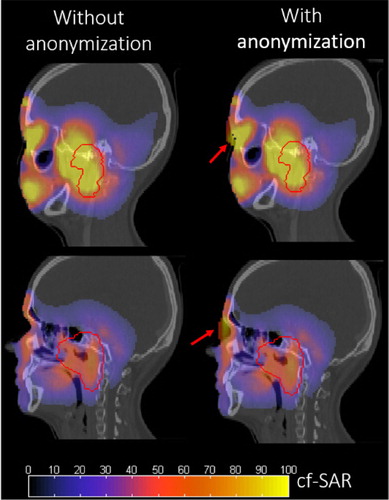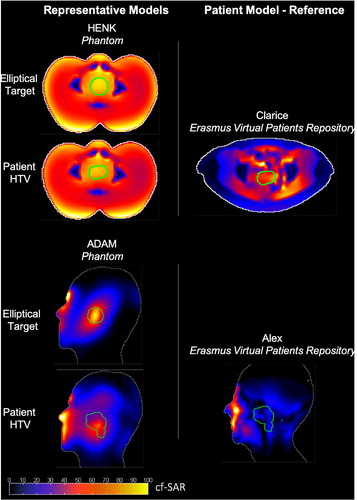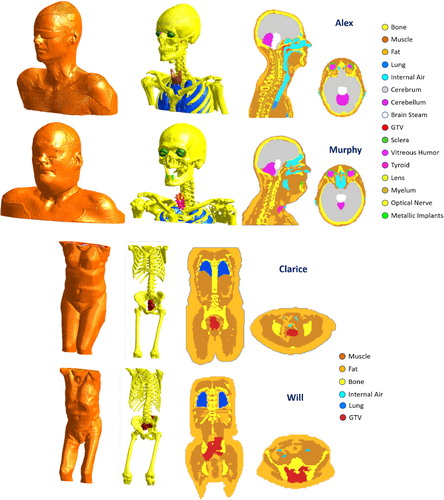Figures & data
Table 1. Anatomical details of the patient models included in the EVPR database.
Table 2. List of the electromagnetic properties at 434 MHz and 77 MHz and density of all tissues included in Will, Clarice, Alex and Murphy CAD models [Citation29].
Figure 2. Sagittal and transversal view of the Erasmus Virtual Patient Repository CAD models enlightening the gross tumor volume (GTV) and/or the hyperthermia target volume (HTV) location within bone structures. In the case of Murphy, the HTV, in pink, is reported as no solid GTV is present.

Figure 3. Sagittal views of the normalized SAR distributions achieved when performing HTP in Murphy’s before and after CAD model anonymization through eyes structure morphing. The red arrows indicate the location of the maximum difference in the SAR.

Table 3. SAR-based quality metrics for the Alex model (head and neck) including a nasopharynx HTV compared to ADAM including the Alex’s nasopharynx HTV and a volume- and position-matched spherical target volume.
Table 4. SAR-based quality metrics for the Murphy model (head and neck) including an oropharynx HTV compared to ADAM including the Murphy’s oropharynx HTV and a volume- and position-matched spherical target volume.
Table 5. SAR-based quality metrics for the Clarice model (pelvis) including a cervix HTV compared to HENK including Clarice’s cervix HTV and a volume- and position-matched spherical target volume.
Table 6. SAR-based quality metrics for the Will model (pelvis) including a cervix HTV compared to HENK including Will’s cervix HTV and a volume- and position-matched spherical target volume.
Figure 4. Transversal view through the HTV mid-line (green contour) of the SAR distributions predicted for the different patient model approximations and Clarice and Alex from the Erasmus Virtual Patients Repository, respectively.


